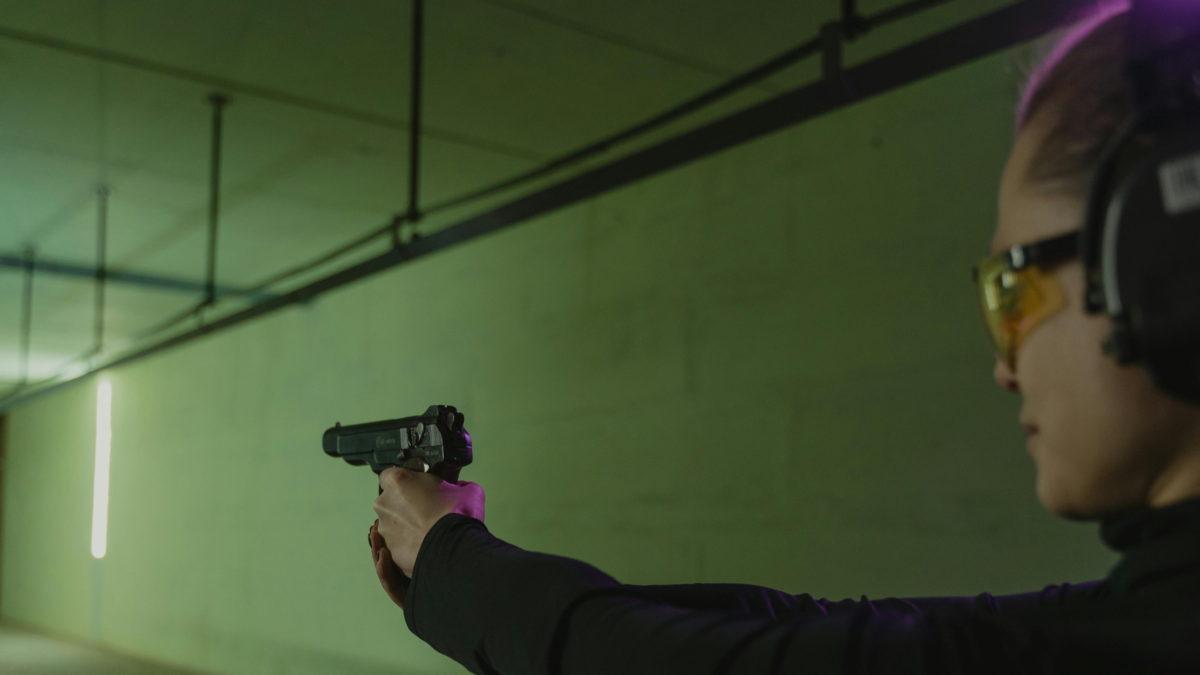Introduction
A career in pistol shooting in India is no longer a faraway dream. Many young shooters today are turning their passion into a real profession. Some aim for medals at the Olympics, while others want to become coaches, referees, or join defense services. This path is not only about sports – it opens doors to jobs, scholarships, and recognition.
At Ronak Pandit Shooting Centre, we see this journey every day. Students walk in with curiosity, pick up the pistol for the first time, and later step out as confident shooters ready for competitions.
If you are curious about learning environments, you can also read our blog on The Best Pistol Shooting Training Centres for Every Age.
Why Choose Pistol Shooting as a Career?
Every sport teaches discipline, but pistol shooting takes it a step further. It sharpens focus, builds patience, and trains the mind to stay calm under pressure. For many shooters, these skills are useful beyond the range.
- Sports Recognition – National and international medals bring respect and pride.
- Education Benefits – The Sports quota helps in admissions to schools and colleges.
- Job Opportunities – Government jobs and defense services recruit skilled shooters.
- Financial Support – Scholarships and sponsorships ease the path for dedicated athletes.
When a child trains in pistol shooting, they are not just learning a sport – they are also building qualities that shape their career.
Career in Pistol Shooting in India: Main Opportunities
1. Competitive Shooter
The most direct path is competing at the state, national, and international levels. With hard work, shooters can represent India at the Olympics, Asian Games, and Commonwealth Games. Winning medals opens the door to jobs in railways, police, or the armed forces.
For those curious about competitions, our detailed blog How Many Rounds Are in an Air Pistol Shooting? explains the structure of matches.
2. Coaching and Training
Not every shooter chooses the competition route forever. Many later become coaches. At Ronak Pandit Shooting Centre, experienced shooters guide the next generation. A coaching career ensures long-term involvement in the sport.
3. Defense and Police Services
Pistol shooting builds accuracy and discipline, two qualities valued in the Army, Navy, Air Force, and Police. Many athletes join these services through sports quotas.
4. Sports Administration
Some shooters move into management roles in sports federations and academies. Their background helps them create better policies for athletes.
Skills You Gain from Shooting: Career in Pistol Shooting in India
A career in pistol shooting in India is not only about pulling the trigger. It is about the invisible skills that grow over time:
- Focus like a surgeon – One distraction can cost a point, so shooters learn to keep their minds steady.
- Patience like a farmer – Just as crops take time, results in shooting come slowly. Training teaches endurance.
- Calmness like water – Even under pressure, shooters must stay cool, just like still water reflects clearly.
These qualities matter in every profession – whether you are an athlete, teacher, or engineer.
How Ronak Pandit Shooting Centre Helps
When choosing a shooting academy, training quality matters. At Ronak Pandit Shooting Centre, we focus on every detail:
- Structured Coaching – Beginners start with the basics, then move to advanced levels.
- Professional Guidance – Experienced coaches, including Olympians, train students.
- Modern Facilities – 10m air pistol ranges with proper equipment.
- Student Success Stories – Many of our students now compete at the state and national levels.
If you are a beginner, you may also want to check out our blog How to Start Your Journey in Shooting Sports in India.
Path to Start Your Career
If you are wondering how to begin, here is a simple roadmap:
- Join a certified shooting academy like Ronak Pandit Shooting Centre.
- Learn the basics – stance, grip, breathing, and trigger control.
- Take part in local competitions to gain experience.
- Move to state and national championships.
- Aim for international events with consistent training.
The journey takes time, but every step brings growth.
Challenges You Should Know
Every career has obstacles, and shooting is no different.
- Cost of Equipment – Pistols and gear can be expensive.
- Time Commitment – Training requires regular practice.
- Mental Pressure – Competitions test nerves as much as skills.
We have covered this in detail in our blog How to Stay Focused in Air Pistol Shooting Competitions.
Real Stories from Indian Shooters
- Abhinav Bindra won India’s first Olympic gold in shooting, proving the sport’s potential.
- Manu Bhaker started young and became a world-class shooter before turning 20.
- Ronak Pandit himself transitioned from being a competitive shooter to a coach, inspiring hundreds through his academy.
These stories show that shooting is not just a hobby—it’s a career that shapes futures.
Conclusion
A career in pistol shooting in India is not limited to medals. It is about opportunities, discipline, and personal growth. From representing the country to coaching young athletes, the sport opens many doors.
If you are serious about building a career in this field, start today. Register today at Ronak Pandit Shooting Centre and take your first step toward the shooting range. You may also explore our blog, Best Pistol Shooting Training Centres for Every Age, to learn about the right training environment.



